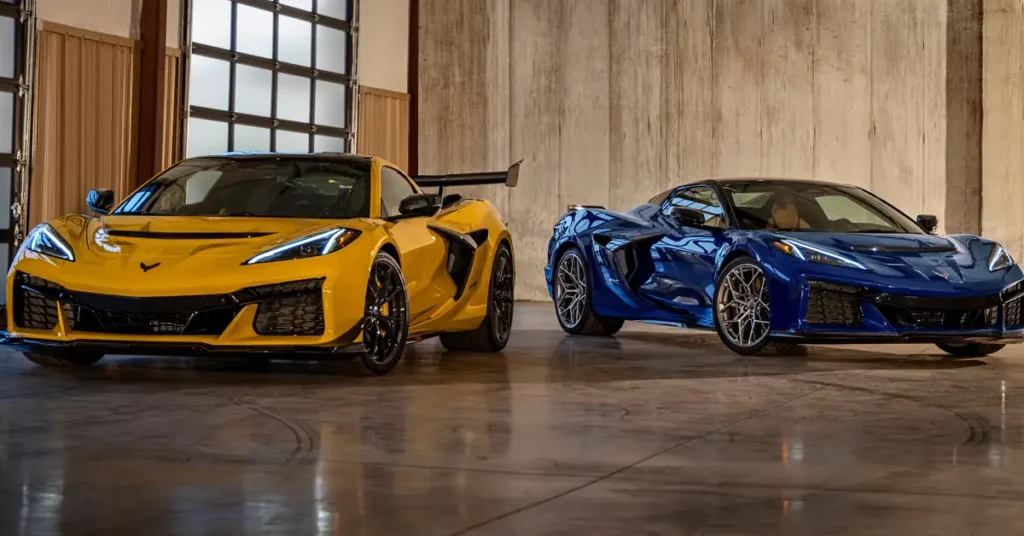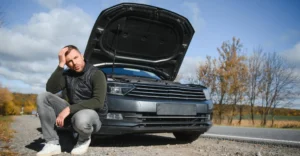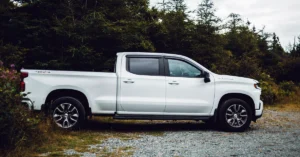
(Image Source: General Motors)
The Corvette Z06 and ZR1 were built to make your heart race not your car catch fire. Yet that’s precisely the situation GM is addressing in its latest recall, covering thousands of high-performance Corvettes built between 2023 and 2026. Beneath all the carbon-fibre glamour and 600-plus horsepower lies a small but serious flaw: a fuelling issue that could, under rare conditions, pose a fire risk.
Here’s what’s going on, what GM is doing about it, and how owners can keep their supercars safe until the official fix rolls out.
Setting the Scene
Few cars in the world can stir the soul quite like a Corvette.
The Z06 and ZR1 are engineering showcases flat-plane-crank engines, lightning-fast gearboxes, track-tuned aerodynamics, and an unmistakable exhaust note that sounds like America’s idea of a symphony.
But even perfection has its quirks.
Recently, GM discovered that the very design that makes these cars such masterpieces also introduced a rare vulnerability in the fuelling system.
In short:
- Affected models: 2023–2026 Corvette Z06 and 2025–2026 Corvette ZR1
- Issue: Potential fuel spillage near a cooling fan, creating a small fire risk
- Cause: Fuel overflow during refuelling can enter the filler pocket and contact hot components
- Status: GM has issued a recall and stop-sale order
- Fix: Dealers will install a protective insert to redirect spilled fuel safely
For most owners, it’s a quick, precautionary service but one worth understanding in detail.
The Affected Models
Let’s get specific.
The recall only applies to the Z06 and ZR1 trims built from 2023 through 2026. The standard Stingray and hybrid E-Ray are not affected.
Why only these two?
Because both use a unique left-side radiator layout with high-flow cooling fans positioned close to the fuel filler pocket. Under certain conditions particularly if a driver continues fuelling after the automatic shut-off a small amount of fuel could splash into the filler recess. The cooling fan might then draw vapours toward the engine compartment.
It’s a perfect storm of airflow and design rare, but serious enough for GM to act fast.
To its credit, GM filed the recall proactively before any major incidents occurred.
The Real Problem: How a Simple Spill Becomes a Fire Risk
Here’s the science, minus the engineering jargon.
When you fill up your Corvette, the nozzle automatically stops when the tank reaches capacity. Overfill even a few seconds more, and excess fuel can collect in the filler pocket the small cavity around the cap.
Normally, that fuel just evaporates harmlessly. But on the Z06 and ZR1, the side radiator’s cooling fan sits close enough to create a low-pressure zone. That airflow can pull vapors toward the engine bay, where if the engine is still hot ignition becomes possible.
This is the kind of issue that only shows up in real-world testing. Ferrari once faced something similar with early 458 Italias, where heat-soaked sealant near the engine led to fire risk. McLaren, too, had to recall the 720S for vapor-ventilation updates.
In other words: even supercars aren’t immune to physics.
GM’s Official Fix
GM’s Official Fix
GM’s engineers have developed a simple but clever remedy.
Dealers will install a small insert or shield behind the filler neck, designed to redirect any spilled fuel away from the fan airflow. The part costs next to nothing but makes all the difference in airflow dynamics.
Until parts arrive, GM has issued a stop-sale for new Z06 and ZR1 models, ensuring nothing leaves the showroom without the update. Owners of delivered cars will receive recall letters and dealer appointment instructions soon.
Technicians are already being trained on the procedure, which should take less than an hour once parts are in stock.
Safety Tips for Corvette Owners
While waiting for your recall fix, a few smart habits can keep you and your car safe:
- Don’t top off your tank. Stop fuelling as soon as you hear the first click.
- Turn off the engine while refuelling. This reduces heat and static charge.
- Avoid damaged or leaky pumps. A poor seal can cause splashing.
- Keep the nozzle fully inserted. Prevents spillage into the filler pocket.
- Never fuel using portable cans. Spills are almost guaranteed.
Think of it as pit-lane discipline small details that separate the pros from the careless.
Problem–Solution Breakdown
| Problem | Cause | Solution |
| Fuel spillage during refuelling | Overfilling or nozzle splashback | Install filler-neck insert; avoid topping off |
| Fire risk from cooling-fan airflow | Left-side radiator draws vapours | GM shield redirects spill path |
| Stop-sale on new cars | Safety compliance requirement | Dealer installs update before delivery |
| Parts pending | Supplier production timeline | GM to notify owners once available |
Preventive Maintenance for Performance Cars
This recall also highlights a bigger truth: high-performance cars need more love than ordinary commuters. Here’s how to keep any supercar Corvette or not in peak condition:
- Inspect your fuel system regularly. Hoses, clamps, and seals degrade with heat.
- Keep the engine bay clean. Dust and residue can trap heat and fuel vapours.
- Avoid overfilling. It stresses the charcoal canister and fuel vents.
- Check cooling systems often. Fans and shrouds must be properly sealed.
- Use the right fuel. Stick to manufacturer-recommended octane and quality.
Preventive care not only keeps your car safe it keeps performance consistent lap after lap.
Corvette vs. Other Performance Recall Cases
No supercar brand is immune to teething problems.
Here’s how the Corvette’s current recall compares with similar cases:
| Model | Issue | Year | Outcome |
| Corvette Z06/ZR1 | Fuel spill fire risk | 2023–2026 | Insert fix pending |
| Porsche 911 GT3 | Fuel-line leak | 2014 | Hose replacement |
| McLaren 720S | Fuel-vapor venting issue | 2019 | Ventilation upgrade |
These examples show that even top-tier performance cars occasionally run into issues what matters is how brands respond. And GM’s quick, transparent action speaks volumes.
FAQs
Is it safe to drive my Corvette until the fix?
Yes, as long as you follow basic fuelling precautions and avoid overfilling. GM’s recall is preventive, not reactive to ongoing fires.
How do I know if my car is affected?
Check your VIN at the official GM recall website or contact your dealer. Affected owners will also receive notification letters directly.
Will this affect my Corvette’s performance or resale value?
Not at all. The fix doesn’t alter performance or emissions; it’s purely safety-related. Completing the recall actually helps maintain your car’s value.
Are other Corvette models impacted?
No. The Stingray and E-Ray have different cooling layouts and are unaffected by this recall.
Final Thoughts
Even icons have off-days.
The Z06 and ZR1 remain two of the most thrilling performance cars ever built machines that rival Ferraris and Lamborghinis at half the price. This recall doesn’t change that. It just reminds us that when you push engineering to the edge, every vent, seal, and airflow channel matters.
GM’s swift response shows responsibility, not failure. Once the fix is installed, you can go back to enjoying what the Corvette does best devouring straights, dancing through corners, and making you feel alive with every throttle press.
Keep Your High-Performance Car Safe with MotorHub UAE
At MotorHub UAE, we understand that supercars demand precision care. Whether it’s fuel-system inspection, thermal diagnostics, or preventive maintenance, our certified network keeps your high-performance vehicle running flawlessly under the desert sun. Book your next inspection through MotorHub and experience service that’s as tuned as the car you drive.


